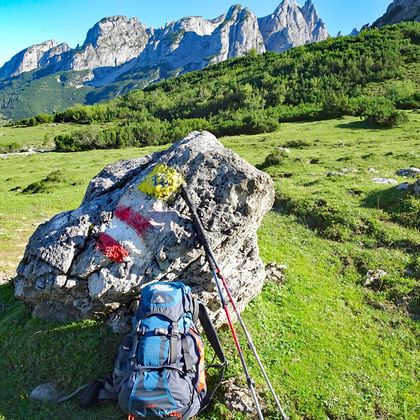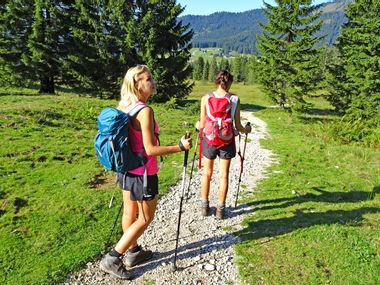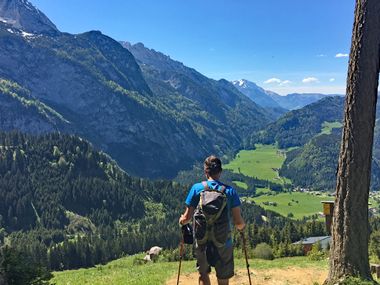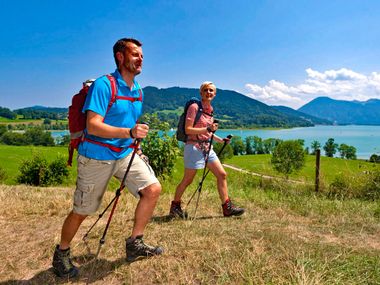Hiking poles are increasing in popularity. But what is the real benefit? What are the advantages and disadvantages? And what should you consider when buying them? We have the answers ready for you here.
Hiking with poles – or maybe without?


Hiking poles are increasing in popularity. But what is the real benefit? What are the advantages and disadvantages? And what should you consider when buying them? We have the answers ready for you here.

When used correctly, poles bring many advantages, which make purchasing them worthwhile for hiking enthusiasts:
Using poles improperly or excessively can lead to some disadvantages. What are they?
The use of poles usually only makes sense on longer and demanding tours and when hikers…
However, if used incorrectly, they can actually do more harm than good. In flat terrain, the tendency to take long strides puts more stress on the joints than hiking without poles. If used too often, your own coordination and balance will suffer.
The following applies: It depends on these points and, above all, correct use! What is correct use? We’ll tell you now!

In steep terrain, the use of poles helps to absorb the strain on the hip, knee and ankle joints. It also ensures more surefootedness. Set the poles a little longer and use the double pole technique. To do this, bring both poles forward at the same time as the leg to be relieved and shift your body’s centre of gravity a little forward (by slightly bending your upper body). Put the balls of your feet down first for maximum joint relief.
Caution: With telescopic poles there is a risk that they can fold in unintentionally. Therefore, never completely rely on the poles and be sure to check the locking mechanism before every descent!

By walking up when using poles, the legs have less to do. Hikers also generate better propulsion. The double pole technique is also best for the ascent. Both poles are used at the same time in order to then push yourself forward. Caution: the tips of the poles should never be placed too far in front, but rather parallel to the body’s centre of gravity. The length of the poles should also be adapted to the terrain.

If you are walking parallel to the slope, the stick on the slope side should be a little shorter and the one towards the valley a little longer. If the terrain is less steep, it is ok to hold the stick on the slope below the handle. It is up to you whether you choose the double pole technique or prefer the diagonal pole use.
Tip: In very demanding terrain, be sure to take your hands out of the pole loops in order to be able to protect yourself in the event of a fall!

When buying hiking or trekking poles, you have the choice between classic, collapsible telescopic poles and folding poles. The latter are particularly useful on tours with many climbing sections, as they can be packed into the backpack to save space. However, what is not recommended is fixed-length poles. Their possible uses are limited – although there is no risk of them accidentally collapsing.
With or without a plate? Medium sized plates are needed in summer, but only for high-speed tours. Large winter plates should be used when snowshoeing in winter.
Since almost all pole tips are equipped with a system to change them, the plates can be easily swapped or removed. The tip of the pole must be made from a particularly hard material for use in stony terrain. Natural cork or natural rubber are suitable materials for the handles. Both are non-slip, heat-insulating and kind to the skin. Important: the pole loops should be equipped with a safety mechanism. The best thing to do is to seek advice from an expert at a sports shop.
With or without poles: hiking is always a pleasure! Do you see it the same way? Then find out more about Eurohike’s most beautiful hiking tours!
By the way: You will find more important tips on the correct hiking equipment here!